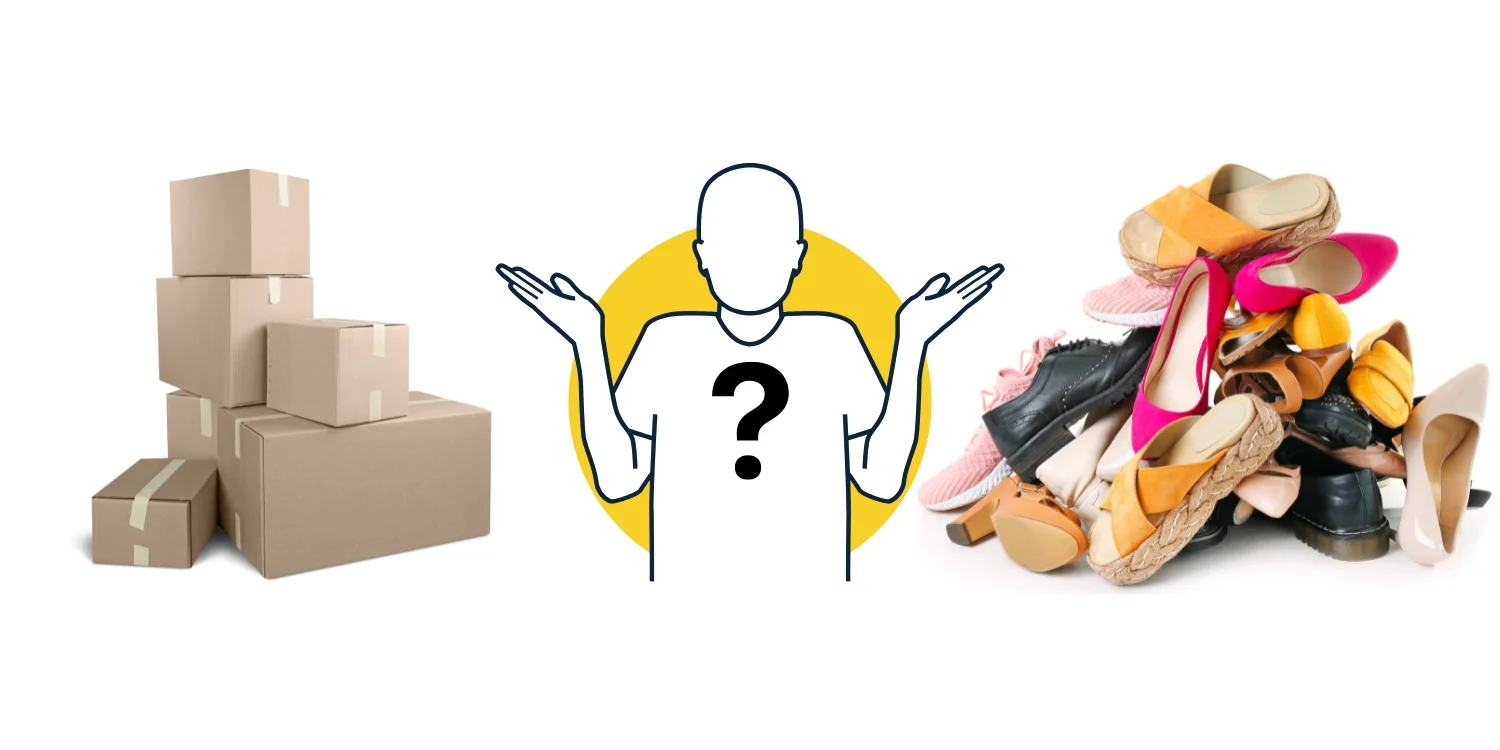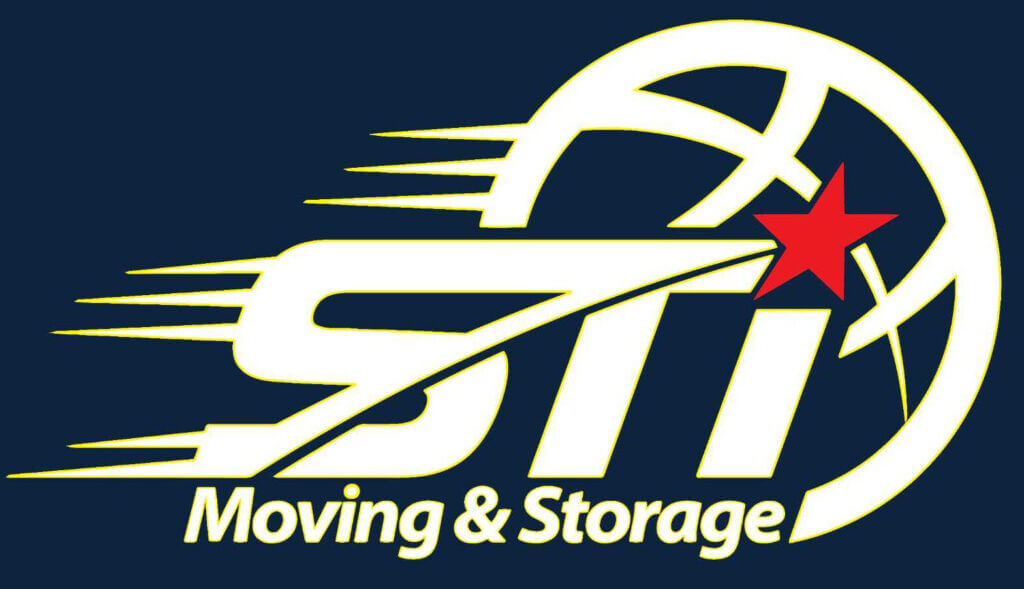Packing shoes properly is key to keeping them in top condition during a move. As an investment in comfort and style, shoes deserve protection from scuffs, crushing, and wear.
Addressing challenges like saving space and ensuring easy unpacking can make all the difference.
For a hassle-free experience, trust professionals like STI Movers Phoenix, who handle your belongings with care, ensuring a smooth and stress-free move.
Declutter Before Packing
· Why Declutter?
Moving offers the ideal opportunity to take a fresh look at your shoe collection. Shoes are bulky and can take up significant space, so reducing unnecessary clutter makes the packing process more manageable.
By sorting through what to keep, donate, or discard, you’ll save on packing materials, cut down on moving costs, and arrive at your new home with a streamlined, organized shoe collection.
How to Declutter Effectively
· Set Aside Unused Shoes:
Start by identifying shoes you haven’t worn in over a year. If they’ve been sitting untouched for multiple seasons, it’s a good sign they’re no longer needed.
· Discard Damaged or Worn-Out Shoes:
Check for irreparable damage, extreme wear, or pairs that are beyond their lifespan. If a shoe isn’t worth repairing or no longer provides comfort, it’s time to let it go.
· Donate Shoes in Good Condition:
For gently worn shoes that no longer fit your style or needs, consider donating them to local charities, shelters, or donation centers. Your unused shoes can find new life with someone who needs them.
Materials Needed
Packing shoes properly begins with the right materials. These tools ensure your shoes stay protected and organized during the move:
- Sturdy Moving Boxes or Original Shoe Boxes: Durable boxes prevent crushing; original boxes offer added protection.
- Packing Paper, Tissue Paper, or Bubble Wrap: Wrap each shoe individually to avoid scuffs and scratches.
- Plastic or Dust Bags for Delicate Shoes: Protect high-value shoes like suede or leather with dust bags or plastic covers.
- Labels and Markers: Clearly label boxes to simplify unpacking, noting contents like “Seasonal Footwear.”
- Packing Tape and Cushioning Materials: Secure boxes and fill gaps with crumpled paper to prevent shifting.
Optional Supplies: Use shoe organizers or vacuum-sealed bags for compact packing of soft shoes like sneakers or flip-flops.
Organize and Sort Shoes
Efficiently organizing and sorting your shoes before packing helps streamline the entire process. Grouping them by type or use ensures they stay organized during the move and makes unpacking much easier.
Group Shoes by Type or Use
· Everyday Shoes:
These include sneakers, casual flats, or other frequently worn pairs. Keep them together for easy access during the transition.
· Seasonal Footwear:
Pack items like winter boots, summer sandals, or rain boots in separate boxes since you won’t need them immediately.
· Formal Shoes:
Organize dress shoes, heels, or special-occasion footwear in their original boxes or wrap them individually for protection.
· Specialty Pairs:
Athletic shoes, hiking boots, or other specialized footwear should be packed with care and grouped separately to make them easy to locate.
Keep Essential Shoes Accessible
During a move, you’ll likely need a few pairs of shoes for daily use. Set aside essentials like sneakers, work shoes, or slip-ons and pack them in a bag or box that stays with you during the move.
Pack Off-Season Shoes Separately
- Store off-season shoes (e.g., winter boots during a summer move) in clearly labeled boxes.
- Prioritize unpacking based on seasonality, which saves time and effort when settling into your new space.
Prepare Shoes for Packing
Proper preparation ensures your shoes stay in great condition during the move. Follow these steps to keep them fresh and damage-free:
- Clean and Dry Thoroughly: Remove dirt and stains to prevent mold and odors. Use methods like airing them out, freezing to kill bacteria, or placing tea bags or baking soda inside to deodorize.
- Stuff to Maintain Shape: Use packing paper, socks, or tissue to prevent shoes from collapsing. Pay extra attention to delicate footwear like heels and boots.
- Wrap Individually: Wrap each shoe in packing paper or bubble wrap to protect against scuffs, especially for leather or suede pairs.
- Protect Delicate Shoes: Store fragile or high-value shoes in their original boxes or smaller sturdy boxes for extra protection.
- Group by Weight: Keep heavier shoes separate from lighter pairs to avoid crushing and ensure balanced packing.
Step-by-Step Packing Guide
Follow these detailed steps to pack your shoes efficiently and protect them from damage during the move:
Line Boxes for Cushioning
- Begin by lining the bottom of each moving box with crumpled packing paper or bubble wrap.
- This cushioning acts as a shock absorber, protecting your shoes from impacts and ensuring a sturdy base for stacking.
Pack Heavier Shoes First
- Place heavy shoes like boots or sturdy sneakers at the bottom of the box.
- This creates a stable foundation and prevents lighter shoes from being crushed during transit.
Use Original Shoe Boxes (if Available)
- Whenever possible, pack your shoes in their original boxes for optimal protection.
- Stack the individual shoe boxes neatly inside a larger moving box to maximize space and keep pairs organized.
Fill Gaps and Avoid Overpacking
- Fill any empty spaces in the box with crumpled paper or bubble wrap to prevent shoes from shifting during the move.
- Avoid overpacking boxes to ensure they’re easy to carry and don’t risk bursting or damaging the contents.
Label Boxes Clearly
- Use labels to mark each box with details like “Shoes,” “Seasonal Footwear,” or “Fragile.”
- Clear labeling makes it easier to identify your shoes during unpacking and ensures they’re handled with care.
Common Mistakes to Avoid
Packing shoes may seem simple, but small missteps can lead to damage or frustration. Here’s what to avoid and how to get it right:
Overpacking Boxes
- The Problem: Overloaded boxes are heavy, hard to carry, and prone to breaking.
- The Solution: Use multiple smaller boxes and distribute weight evenly for easier handling.
Skipping the Cleaning Process
- The Problem: Dirty shoes can transfer dirt to other items or develop odors and mold.
- The Solution: Clean and dry shoes thoroughly before packing, and use tea bags or baking soda to deodorize.
Failing to Wrap Shoes Individually
- The Problem: Shoes can rub against each other, causing scuffs or scratches.
- The Solution: Wrap each shoe individually in paper or bubble wrap, especially delicate pairs.
Forgetting to Label Boxes
- The Problem: Unlabeled boxes make unpacking chaotic.
- The Solution: Clearly label each box with contents and destination room.
Creative Hacks for Packing Shoes
Packing shoes doesn’t have to follow a one-size-fits-all approach. These creative hacks can save space, make transportation easier, and keep your shoes organized throughout the move:
Use Suitcases
· Why It Works:
Rolling luggage provides a sturdy and portable alternative to boxes. It’s particularly useful for heavier shoes like boots or multiple pairs.
· How to Pack:
- Line the suitcase with packing paper or a cloth for added protection.
- Arrange shoes neatly, with heavier pairs at the bottom and lighter pairs on top.
- Utilize zippered compartments for small items like sandals or flip-flops.
Vacuum-Sealed Bags
· Why It Works:
Vacuum-sealed bags compress soft shoes, like sneakers or flats, saving valuable space in your moving boxes.
· How to Pack:
- Place pairs of soft shoes in the bag, ensuring they’re clean and dry.
- Seal the bag and remove excess air to shrink the volume.
· Important Note:
Avoid using this method for structured shoes, as compression can damage their shape.
Shoe Organizers
· Why It Works:
Hanging shoe organizers are a great way to keep pairs separate and organized without taking up box space.
· How to Pack
- Place shoes in the compartments of the organizer.
- Roll or fold the organizer and secure it with a tie or strap to keep the shoes in place.
· Best For
This method works well for smaller or lightweight shoes like slippers, flats, or kids’ footwear.
FAQs
How do I pack expensive or delicate shoes?
Expensive or delicate shoes, such as heels, suede, or leather pairs, require extra protection. Wrap each shoe individually in bubble wrap or tissue paper to prevent scuffs and scratches. Store them in their original boxes, if available, or use smaller, sturdy boxes to keep them safe during the move.
Can I use plastic bags for packing?
While plastic bags may seem convenient, they can easily tear and don’t provide adequate protection. Instead, use dust bags for delicate pairs or wrap shoes in bubble wrap or tissue paper for durability and safety.
What’s the best way to save space?
To maximize space:
- Nest Shoes Together: Place one shoe inside the other (if their shape allows) to minimize volume.
- Use Vacuum Bags: Compress soft shoes like sneakers or flip-flops in vacuum-sealed bags to shrink their size. Avoid this for structured or delicate pairs to maintain their shape.
Should I pack all shoes together?
It’s best to group shoes by type or purpose to simplify unpacking. For example:
- Pack everyday shoes in one box for easy access.
- Keep seasonal or specialty footwear separate and labeled accordingly.
- This method helps prioritize what to unpack first and keeps your collection organized.
Conclusion
Packing shoes properly can make a big difference in your move. By decluttering, using the right materials, and organizing thoughtfully, you’ll keep your shoes in great condition and make unpacking easier.
If it feels overwhelming, let STI Movers Phoenix help with expert packing and moving services to ensure your belongings arrive safely. Contact us today to make your move stress-free!




